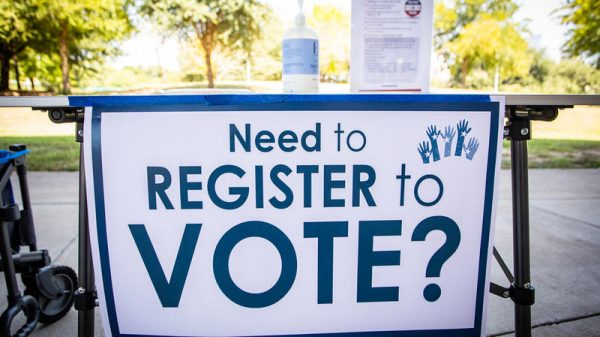
Representation of mortgage deals for houses from Getty images.
Mortgage rates are moving toward 8%, making assumable loans more appealing.
Another trend not seen in decades has reappeared as mortgage rates continue their upward march after reaching highs not seen in more than 20 years: more buyers are looking to assume a seller’s loan in order to escape today’s interest rates.
Instead of applying for a new mortgage, an assumable mortgage enables homebuyers to take over an existing one held by the seller, allowing them to inherit the conditions, including the interest rate. With current mortgage rates hanging around 8% and millions of homeowners locked in at rates far lower, these deals, which were common in the 1970s and 1980s, are starting to increase in popularity once more.
According to a recent article from The Wall Street Journal, the option is not available for conventional loans, but mortgages backed by government organizations like the Veterans Administration (VA), United States Department of Agriculture (USDA), and Federal Housing Administration (FHA) do have assumable functions and account for about 22% of active mortgages.
That’s a significant portion, and some real estate agents are now advocating assumable loans as a solution for prospective purchasers who are unable to purchase a property at the current high costs.
Since it is sometimes the only opportunity for lower- or middle-income families to realize the American dream in this market, Christopher Tapia, a real estate agent for Compass in Florida, says he has been aggressively urging buyers to hunt for properties whose sellers have assumable loans.
“Today, in this era, we have to think outside the box,” Tapia told FOX Business, referring to the chronic shortage of inventory, exorbitant property prices, and rising mortgage rates that have resulted in an affordability problem. “So, I thought to myself, what is the other alternative? What can we do? And once I continued to read about assumability, that’s when I stepped in and started letting everybody know about it, because that’s basically the only way” for certain individuals to purchase a house.
Mortgage assumptions are receiving greater attention these days, said Chris Birk, vice president of mortgage insight at Veterans United Home Loans.
Three-quarters of VA homeowners presently have a mortgage rate below 4%, making the assumption of those loans an appealing option, according to a Veterans United review of Ginnie Mae statistics through June. More sellers are reportedly advertising assumptions in their house listings.
When interest rates were at their current lows, the capacity to assume a debt “didn’t mean much,” Birk told FOX Business. “But in today’s higher-rate environment, the chance to lock in an ultra-low rate can benefit both would-be buyers and veteran home sellers.”
Despite the fact that assumable loans might be a fantastic option for both buyers and sellers, according to Tapia, sometimes math does not make sense for purchasers. Birk issued a warning that permitting a non-Veteran to take over a VA loan might make it more difficult for the seller to obtain a future VA loan.
“Some homeowners decide that’s a risk worth taking,” he stated. “While others ultimately choose a more traditional home sale once they learn about the potential downsides of an assumption.”
What is an assumable mortgage?
A sort of financial arrangement known as an “assumable mortgage” transfers an existing mortgage and its terms from the present owner to the buyer. The buyer can avoid getting a mortgage by taking on the outstanding debt of the prior owner. Assumable mortgages can be made from a variety of loans, but there are certain unique factors to take into account. It’s a difficult market for homebuyers with mortgage rates at a comparatively high 7.57% for 30-year loans. However, loan assumption enables a buyer to assume the existing owner’s mortgage while keeping the loan’s parameters, such as the repayment schedule and interest rate, the same. In the end, it can assist consumers in purchasing a property at a reduced interest rate even when the local housing market increases in price.
The Lending Tree explains how the mortgage works.
Novation, in which the lender permits the buyer to assume responsibility for the existing mortgage, is the safest sort of assumption. The lender is prepared to absolve the seller of any further need to make mortgage payments since it will subject the buyer to the underwriting procedure before approving them.
A less frequent method of assuming a mortgage is a simple assumption. Without the mortgage lender’s consent, the buyer and seller privately transfer ownership of the mortgage. It’s a significantly riskier transaction because the mortgage lender isn’t engaged and doesn’t put the buyer through the underwriting procedure. Both the buyer and the seller are liable if the buyer defaults on payments or otherwise violates the mortgage agreement with the lender.
Zillow expounds on the advantages and disadvantages of the assumable mortgage. According to them, when processing an assumable mortgage and taking over the seller’s loan, there are benefits for both the buyer and the seller, particularly if the seller’s mortgage interest rate is significantly lower than market rates or is lower than the rate the buyer may be able to get based on credit history. If, for example, the market rate is 6 percent and the buyer assumes the mortgage is at 4 percent, the buyer will immediately save money. Less closing charges are also incurred while assuming a mortgage. Savings are realized by the buyer, but a seller may also benefit from this.
It becomes disadvantageous if the value of the house is higher than the balance of the mortgage, a buyer who assumes a mortgage could need to get a second mortgage or bring a sizable quantity of cash to the table. The buyer will need to come up with $150,000 to make up the gap, for instance, if the property is selling for $250,000 and has $100,000 left on the mortgage. To do this, the buyer might either borrow the money to cover the shortfall or pay the balance in cash.
The situation can get more difficult if the buyer has to obtain a second loan since the two mortgage lenders might not be willing to work together. If the buyer fails on either loan, the other lender may face legal issues. In other circumstances, it could also not be permitted by the contract. The advantages of having an assumable loan are also significantly diminished by taking out another loan.
Either way, it is advised to consult agents and research the mortgage rates to make the best use of this service.




![Tyson Foods Plant [Photo: Food Manufacturing]](https://southarkansassun.com/wp-content/uploads/2023/08/iStock_1185520857__1_.5e441daa51cca-600x337.jpg)








![Silverado Senior Living Management Inc. [Photo: Los Angeles Times]](https://southarkansassun.com/wp-content/uploads/2023/10/download-6-4-600x337.jpg)

![China's Wuhan Institute of Virology [Photo: Nature]](https://southarkansassun.com/wp-content/uploads/2023/09/d41586-021-01529-3_19239608-600x337.jpg)














